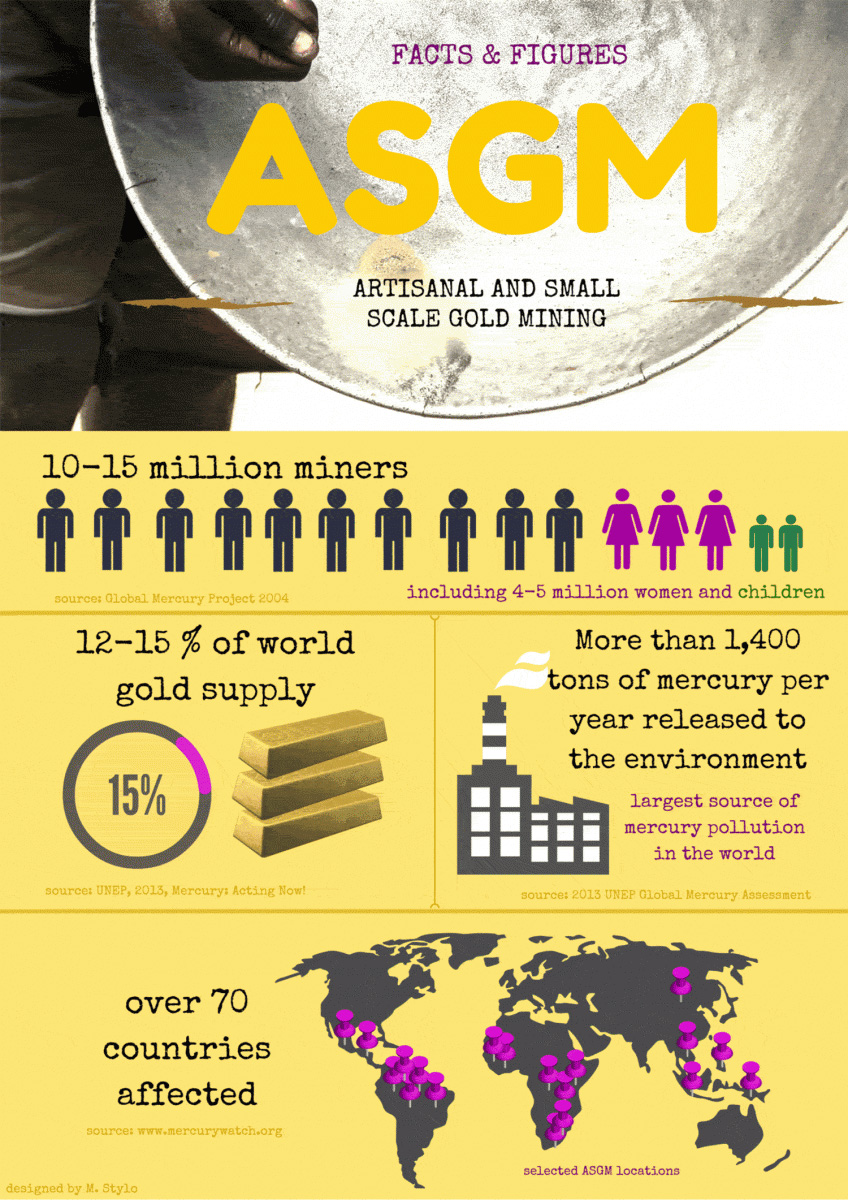Artisanal and Small-scale Gold Mining (ASGM)
What is ASGM?
Artisanal and small-scale gold mining known as ASGM is the largest global demand for mercury and releases the estimated amount of 1400 tonne of mercury annually. An estimated 10-15 million miners, including 4-5 million women and children involved in the ASGM sector in more than 70 countries around the world and it became a complex global development issue.
Due to the global demand and continuously increasing of gold price in recent decades and are currently at their highest level, over 15 million of people in developing countries may directly be involved in artisanal and small-scale gold mining (ASGM) with another 100 million people to be reliant upon the sector for their livelihoods.

Figure 1. Artisanal and Small Scale Gold Mining – Facts and Figures
Miners suffered varieties of health issues and diseases such as respiratory distress and lung disease from toxic inhalation, and vomiting, headache, fever, chills, abdominal pains, and diarrhea from the absorption of elemental mercury.
Miners and their communities can be protected from the harmful effects of mercury by practicing simple and practical ways. It is necessary to include sustainable development efforts widely which will decrease or stop the applying of mercury in ASGM.
Until present, a great number of people in developing countries have to work in artisanal and small-scale gold mining (ASGM) to meet their living needs. But this causes the downside of the whole community. Practicing ASGM with improper technique has caused the environmental and occupational health problems which affect the health and well-being of miners, their family members, and also nearby communities. The Minamata Convention on Mercury, adopted in October 2013, has encouraged the movement globally, regionally, and nationally for the promotion and protection of health and well-being of populations that depend on ASGM. Hence the usage of mercury in ASGM has been identified as a threat to the health and environmental wellbeing, the Convention necessitates the members to establish the public health strategies aimed for the reduction of mercury exposure in ASGM miners and their communities.
References
UNITAR UN Environment Minamata Convention, Retrieved from http://mercury.unitar.org/site/document/1272
Project Members
A group of scientists, researchers, and specialists from different disciplines have been conducting transdisciplinary approach research and practice of various studies in collaboration with different stakeholders to co-create the sustainable regional innovation for reducing the risk of high-impact environmental pollution and poverty problem as well as the wellbeing of the ASGM communities in Indonesia and Myanmar.
Studiy Areas
We are conducting the project’s case studies on the reduction of Hg pollution using a future scenario of ASGM areas in the following areas in Indonesia for the past years and recently initiating the same studies in Myanmar in collaboration with various key stakeholders.
Academic Achievements
The outcomes of various research studies related to environmental impact assessments, socioeconomic, cultures, history, and regional sociology, etc resulted as publications, presentations, lectures, etc. in International and local journals, seminars, conference for the past years.
